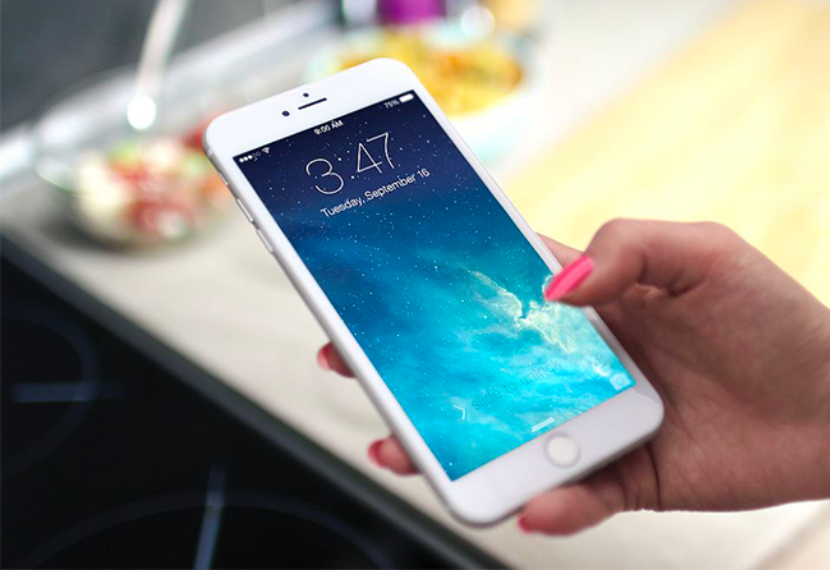An optimized app onboarding process is crucial for engaging users and ensuring they remain active over time. When users fail to grasp the value of an app from very early on, there’s a much higher risk of them disengaging and ultimately churning.
The onboarding experience should seamlessly guide users through account setup, explain core app features and functionalities, and establish a positive first impression. The primary goal here is for users to uncover the value of your app as quickly as possible.
Why is onboarding so important?
The average app loses 77% of its daily active users (DAUs) within the first three days after an install. By the 30-day mark, it skyrockets to 90%, and after 90 days, it’s over 95%. In other words, most apps lose their entire user base within a few months. That’s a lot of disappearing acts.
A user typically decides whether to continue using an app within the first seven days—that’s the make-or-break window. Users retained during this period are much more likely to stick around long-term, so the key is to hook users during this critical 1-7 day window.
Looking at the retention curves of Google Play rankings, it’s pretty clear—the apps with higher day-one retention rates tend to dominate and end with stronger day-30 results.

Interestingly, all apps share a similar drop-off pattern. More users remain active for the top apps on day one, but the drop-off from there happens at the same rate as all other apps. This emphasizes the importance of engaging users from that initial app launch on day one.
Measuring onboarding effectiveness
Determining if your onboarding process successfully delights users or is in need of improvement starts with analyzing your retention data.
Statista’s research shows the average retention rate on the day of installation across all app categories is 25%, dwindling to just 5.7% after 20 days. This varies widely by industry. News apps, for instance, boast an average retention rate of 33.1% on day one and 13.3% on day 30. That’s nearly three times the average!

While retention rate benchmarks certainly offer insight into app longevity, it’s important not to draw conclusions from these metrics alone. Each app is unique; for example, users might install a travel app before their flight, use it to speed up their check-in process, and then uninstall it once their journey is complete. In such cases, a lower retention rate after day seven is expected behavior for that vertical and not a cause for concern. Combining multiple metrics will help provide a holistic view of the user journey for your specific app.
In saying that, if a higher-than-average percentage of users churn after a single app use, it’s a good idea to evaluate the user experience, friction points, value sell, and engagement of your onboarding process. Several factors influence user churn, and the onboarding experience is undoubtedly one of them.
Improving the onboarding experience
Maximizing customer lifetime value often hinges on that day-one experience. When onboarding doesn’t convey the value of your app quickly, the risk of user churn significantly increases. That’s why continuous improvement and optimization of your onboarding process are essential.
Lead app onboarding with value
While ‘Here’s what our product can do’ and ‘Here’s what you can do with our product’ may seem alike, they represent two very different approaches to showcasing value. Users download your app to solve a specific problem and are interested in discovering how your app can help. The onboarding process should clearly explain the problem your app solves and why users will benefit from using it.
Of course, you don’t need to present the entire feature set during onboarding—just the most important. You can drip-feed the less essential (but still really cool) features during the user’s subsequent app visits.
Venmo gets this. The popular mobile payment app immediately communicates its core value of easily managing payments in a single welcome screen.
Airbnb app users can experience the value immediately by browsing listings and available dates without the need to sign up. Users are only asked for their details when they are ready to book a trip, at which point they have already been sold on the value.

Whether your onboarding flow is a product walkthrough, new user registration, or tutorial, keep the focus on benefits, not features. Explaining an app’s navigation structure, for example, is largely unnecessary unless it deviates from a standard design.
Then, when you are ready to share those additional features, you can use in-app messaging and push notifications for seamless communication that’s based on users’ behavior inside and outside the app.
Ask for user permissions when it makes sense
User permissions can be a tricky business. Many apps require data access and messaging permissions to deliver a complete end-to-end experience. But, with privacy a big friction point for users, gaining that all-important opt-in can be challenging.
To increase your chances, ask for consent when it makes sense rather than requesting access to everything during onboarding. A study by Pew Research Center found that 60% of users abandon onboarding and uninstall an app when they discover how much personal information the app is requesting.
B612, a video and photo editing app, asks for all permissions on the second screen of its onboarding process. There is no explanation given to the user except that these permissions are needed before the user can proceed.

To avoid onboarding abandonment, ask for consent when users want to use a feature directly related to that specific permission. That way, users will understand exactly where and why the permissions apply.
Only when a user wants to connect a device to their Amazon Fire TV app are they asked to share their location to determine the best place for the user to place the antenna. This is a natural approach to requesting access and appears helpful rather than invasive.

Before Delivery.com launches the location permission request, it explains why access will improve the app experience using this neat in-app message.

Be clear about why you’re asking for access and why it’s vital for getting the most value from your app. Some data access is essential for key app functionality, but save the ‘nice to have’ permissions for moments when users are more engaged with your app.
Use a multi-channel strategy
It’s common for users to abandon onboarding, but all hope is not lost. Re-engage users quickly, and you can encourage them to return and continue exploring. Push notifications are perfect for enticing users to continue experiencing the app’s core value and nudging them to complete onboarding. For example, tailored messages based on how far users are in the onboarding journey can encourage them to take the next step.
Onboarding isn’t necessarily a one-time event. You have the initial onboarding when users first download and launch your app. But then, as you add new features or make changes to your app, you’ll want to continually educate and inform your users to establish long-term retention. In-app messaging and embedded content can work seamlessly together to continue providing enhanced value to your users.
Put your app onboarding to the test
A/B testing can help you optimize the user onboarding process. You can test sign-up options, for example. Do users prefer to sign up before or after an introduction to your app? What does retention look like if you delay sign-up until the user is more deeply engaged?
The social app Houseparty had the goal of incrementally improving the functionality and design of its app without causing significant drops in metrics. They first wanted to improve how they prompted users to add friends during onboarding.
Initially, users received permission requests all at once and without context, resulting in most users declining and making it difficult to deliver the optimal user experience. After A/B testing, the app discovered that providing context around why giving access is important resulted in greater opt-ins, and it changed the app UI to reflect this.

For most apps, it’s standard to display several informational screens as part of the onboarding. Vevo, the music video streaming app, did just that. However, through user testing and analytics, they realized most users were swiping through the tutorial without reading the copy, wanting to get to the sign-up page quicker. Vevo was curious to discover if the registration rate would be higher if it gave users what they wanted sooner.
They launched two app versions to test the hypothesis—one with the tutorial and the other without. After tracking sign-in clicks, skip clicks, successful sign-ups, and user retention, Vevo found that adding a skip option to the onboarding flow increased logins by nearly 10%, and the number of successful sign-ups jumped by almost 6%.

While we’re not recommending every app ditch its onboarding tutorial, the learning here is not to take industry-standard practices for granted.
Elevating user engagement through thoughtful onboarding
While acquisition was once the sole measure of an app’s success, the spotlight has since shifted toward long-term user engagement and retention. If an app today focuses only on acquisition without nurturing customer relationships, the result is high churn, even higher acquisition costs, and stalled business growth.
Central to cultivating lasting customer relationships is a streamlined, impactful onboarding process. Keep it simple, ask for only what’s necessary, and emphasize the features and UI elements that make your app shine.
Of course, every user base and app vertical is different, so it’s important not to rely solely on industry standards. The path to a successful onboarding experience involves a continuous cycle of testing, optimizing, improving, and testing again. This iterative approach will help unveil what resonates best with your users and pave the way for your app to succeed in an environment where user engagement reigns supreme.
Curious if your onboarding experience aligns with best practices and meets customer expectations? Connect with our team to discover how effortlessly you can onboard and captivate users with MessageGears.





